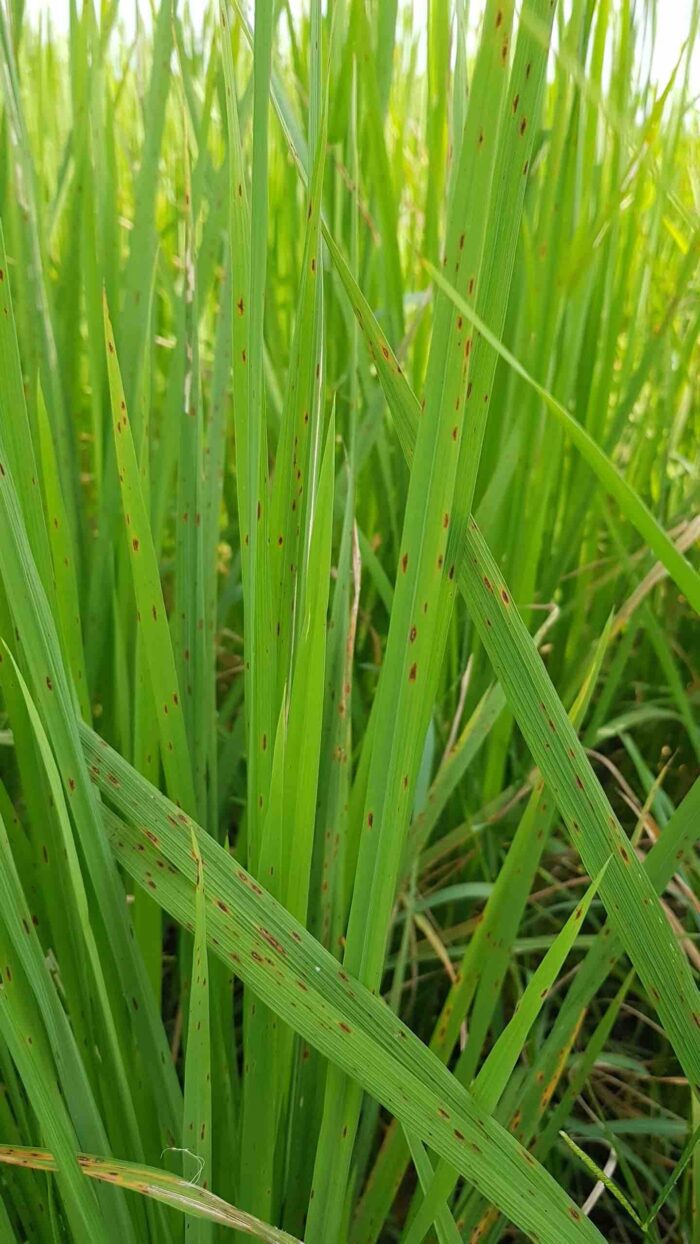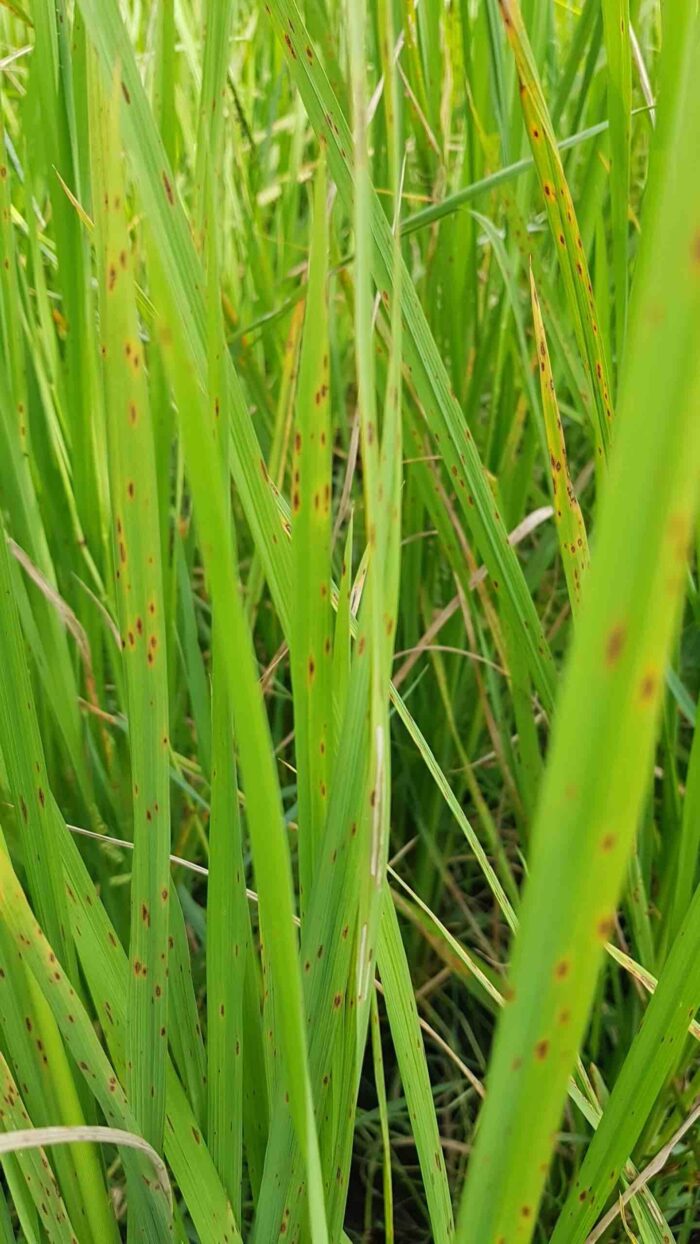Tache brune
Rice
The symptoms on leaves are round or oval brown spots with yellow halos. The disease can cause significant economic losses if not controlled. Eventually, it will manifest on glumes and seeds that lead to yield reduction.
Brown leaf spot is a fungal disease that affects rice fields all over the world. Brown leaf spot favors high humidity, but is capable of developing in a range of temperatures. The fungi is more common in unflooded fields and where soils suffer nutrient-deficiencies. Important sources of brown leaf spot outbreaks are infected seeds in which the fungi are able to survive for several years and the air through the aid of wind.
Calendrier: Il est plus facile et plus rentable de surmonter les infestations au cours des premières étapes. Surveillez régulièrement le champ et recherchez les signes ci-dessus.
Il est toujours recommandé de planter des semences de haute qualité et sans maladie.
Utilisez des variétés de plantes et des semences résistantes à la maladie.
Conservez un espace adéquat : évitez de planter avec une densité excessive afin que la lumière puisse pénétrer.
Fertilisation adéquate : La surutilisation des engrais azotés n’augmente souvent pas les rendements de manière significative et peut augmenter le nombre de nouvelles infections dues à l’explosion de riz.
Assainissement: Gardez l’environnement proche des cultures en éliminant les mauvaises herbes, les débris de plantes, les parties endommagées, la croissance indésirable des plantes et les plantes à proximité qui ne sont ni cultivées ni protégées.
Les produits utilisés dans une ou plusieurs régions du monde peuvent contenir les ingrédients suivants :
propiconazole, l’iprodione, métominostrobine, azoxystrobine, et carbendazime.
*Names marked in red are considered to be highly poisonous to beneficial insects.
*Names marked in green are considered to be organic and IPM (integrated pest management) compatible.
Image Gallery


